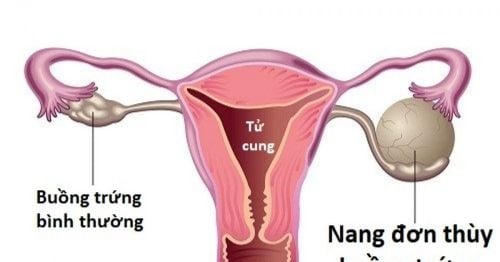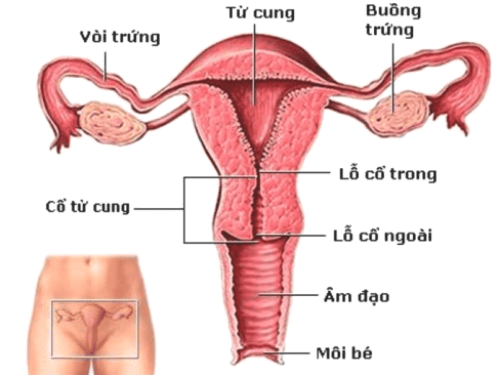This is an automatically translated article.
The ovaries are responsible for the production and release of eggs (ovules) into the female reproductive tract at the middle of each menstrual cycle. At the same time, the ovaries also produce the female hormones estrogen and progesterone to create female sex right from the fetal stage.
1. Learn about ovaries?
The ovaries are part of the female reproductive system. Each woman has two ovaries, located on either side of the uterus, in the hypogastric region. They are oval in shape, about 4cm long, and are held in place by ligaments that attach to the uterus but are not attached directly to the rest of the female reproductive tract, the two fallopian tubes.
The role of the ovaries is the main reproductive function in the body. They both produce ovules (eggs) for fertilization, which form an embryo, and they also produce the reproductive hormones, estrogen and progesterone. The function of the ovaries is controlled by gonadotropin-releasing hormone released from neurons in the hypothalamus, which sends messages to the pituitary gland to produce luteinizing hormone and follicle-stimulating hormone. From there, the cycle of the levels of these hormones in the blood will form the menstrual cycle.
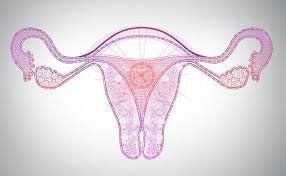
Buồng trứng đóng vai trò là chức năng sinh sản chính trong cơ thể
2. How many follicles does a normal ovary have?
During a menstrual cycle, the ovaries release an egg (ovum) in the middle of each menstrual cycle. Normally, only a single egg cell from one ovary is released during each menstrual cycle, and each ovary takes turns releasing an egg.
How many follicles a normal ovary has depends on the number right from the time of shaping the female fetus in the mother's womb. During fetal development, the number of follicles will also decrease. Until birth, a baby girl born with all the eggs will have an estimated two million.
However, when a girl reaches puberty, this number drops to about 400,000 eggs stored in the ovaries. Even so, from puberty to menopause, only about 400–500 eggs will mature, be released from the ovaries (in a process called ovulation) and potentially become fertilized in the tubes. Fallopian tube of the female reproductive tract, forming a fetus.
3. How do the ovaries work?
The activity of the ovaries is expressed through the menstrual cycle. Accordingly, the stages of the ovaries in a menstrual cycle are 28 days long. Ovulation occurs in the middle of the cycle, which is day 14.
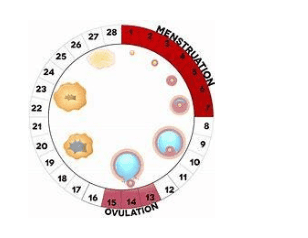
Sự hoạt động của buồng trứng thể hiện thông qua chu kỳ kinh nguyệt
In the ovary, all eggs are initially enclosed in a single layer of cells called the follicle, which functions to support the egg. Over time, these eggs begin to mature so that the most ripe one is released from the ovary during each menstrual cycle.
As the egg matures, the cells in the follicle divide rapidly and the follicle becomes larger. Many follicles become incapacitated in this process, which can take several months, but one follicle dominates each menstrual cycle and the egg it contains is released into the fallopian tube at ovulation.
As the follicles grow, they produce the hormone estrogen. Once an egg has been released at the time of ovulation, the empty follicle that remains in the ovary is called the corpus luteum and releases higher levels of the hormone progesterone and less estrogen. These hormones prepare the lining of the uterus for pregnancy duty in the event that an egg is released into the uterus and fertilized. If the released egg is not fertilized and there is no pregnancy during this menstrual cycle, the corpus luteum is rapidly destroyed and the secretion of estrogen and progesterone stops. The sudden drop in these hormone levels causes the endometrium to begin to shed and be eliminated from the body through contractions of the uterine muscles, resulting in menstruation. After 3 to 5 days of menstruation, another ovarian cycle begins.
As a woman enters middle age, perimenopause and menopause begin, preparing for the end of a woman's reproductive years after her last officially defined menstrual period. It is caused by the loss of all remaining follicles in the ovaries that contain eggs. When there are no more follicles, the ovaries will no longer secrete the hormones estrogen and progesterone, no longer working to regulate the continuation of the menstrual cycle. As a result, the menstrual cycle stops.
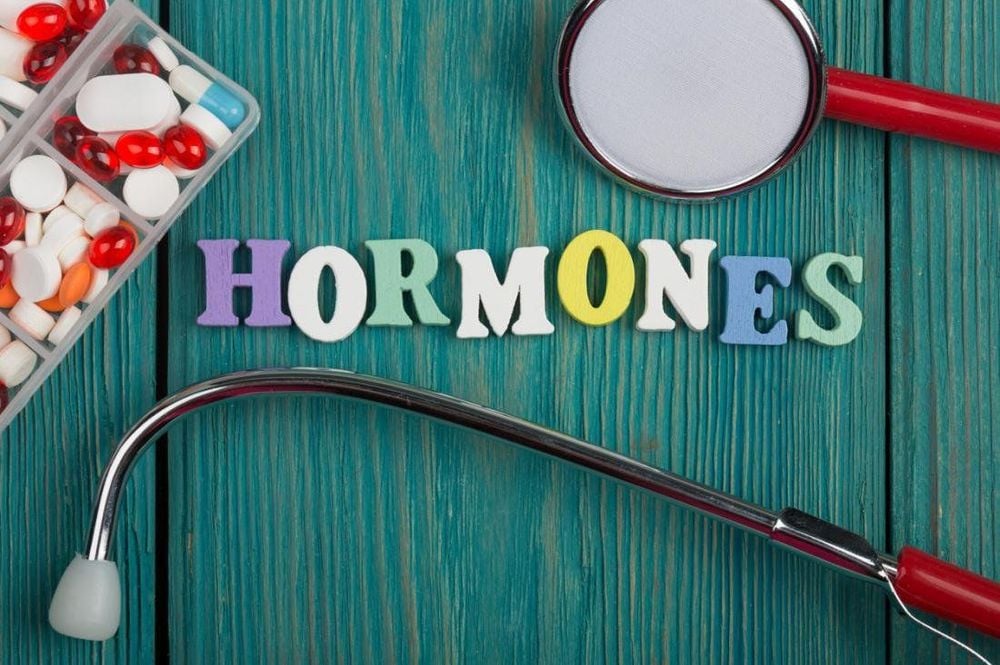
Sự sụt giảm hormone khiến nội mạc tử cung bong tróc và hình thành kinh nguyệt
4. What can happen to the ovaries?
Any factor or medical condition that prevents the ovaries from working properly can reduce a woman's fertility.
Ovaries naturally tend to stretch and stop functioning during menopause. This occurs in most women around the age of 50. If this happens earlier, before the age of 40, it is called premature ovarian failure.
The most common ovarian abnormality is polycystic ovary syndrome, which affects 5–10% of women of reproductive age and if your condition is not detected and treated promptly, The higher the risk of infertility, the higher the risk of infertility. Therefore, if you are of reproductive age and have abnormal signs such as: Abnormal menstrual cycle, dull pain in the abdomen - back - pelvis, it is best to have regular gynecological health check-ups. at reliable specialized medical facilities for early detection of diseases and appropriate treatment solutions.
At Vinmec International General Hospital, there is a basic Gynecological Examination and Screening Package, which helps detect diseases even when there are no symptoms. Here, the patient will be examined by a team of good doctors, if a cyst is detected, the patient will be advised what size ovarian cyst should be operated on? . From there, give the most suitable regimens for the patient's condition, in order to bring the best results for the patient's health.
In short, how many follicles a normal ovary has depends on when a girl is born, but this number will quickly decrease. Therefore, in order to maintain the quality of the follicles as well as prolong the female sex life, a woman needs appropriate health care measures for the normal functioning of the organ system in general. and ovaries in particular.
Please dial HOTLINE for more information or register for an appointment HERE. Download MyVinmec app to make appointments faster and to manage your bookings easily.





